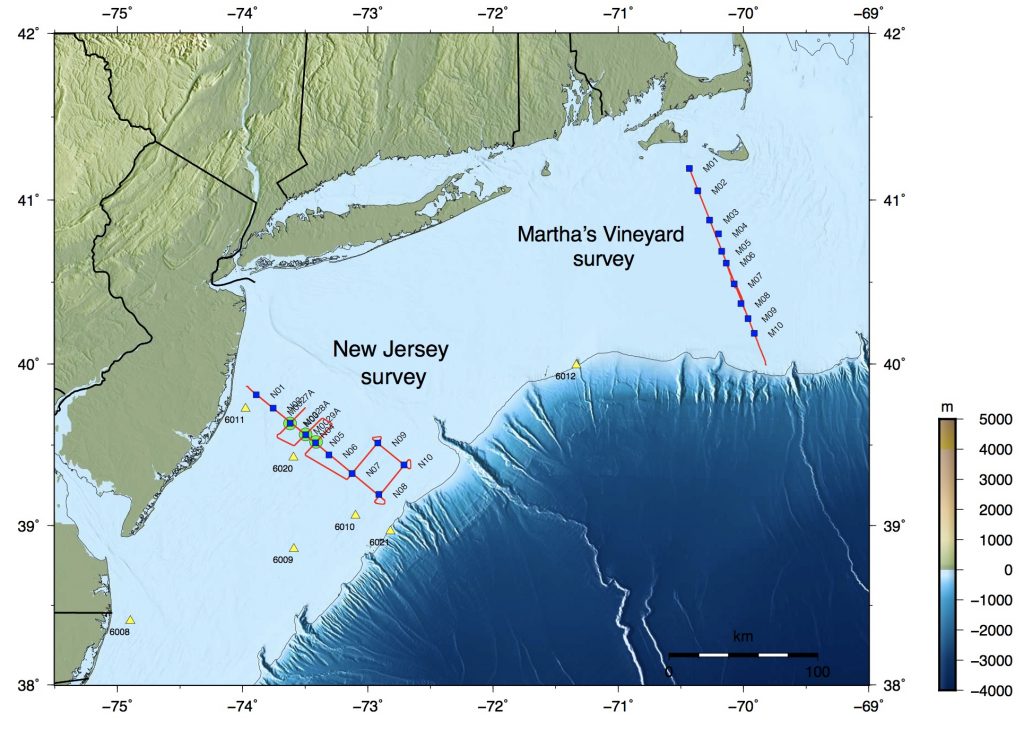New England Groundwater
Offshore aquifers within continental shelves are a global phenomenon, but the distribution and volume of these groundwater systems are poorly constrained due to limited observations. Improved characterization of the extent and geometry of offshore aquifers is necessary in order to better understand the mechanisms of offshore groundwater emplacement, potential hydrologic connections to onshore systems, the influence of submarine groundwater on biogeochemical cycles, and the feasibility of sustainable extraction.

Electromagnetic methods are well suited for this characterization because the salinity difference between fresh groundwater and seawater results in a strong electrical resistivity contrast. We used shallow water electromagnetic geophysical methods to image laterally continuous submarine aquifers extending 90 km offshore New Jersey and Martha's Vineyard, Massachusetts, on the U.S. Atlantic margin. Both surveys reveal aquifers about 200 m thick, ranging from 50 m to 400 m below sea level, that are underlain by saline pore water from 400 m to at least 800 m below sea level.
Our electromagnetic imaging shows the lowest aquifer salinities exist closest to shore, implying an active connection to the onshore groundwater system. Our results are consistent with pore water salinity observations from previous drilling campaigns offshore New Jersey and onshore Martha's Vineyard. We identify clinoforms as a previously unknown structural control on the seaward extent of low-salinity groundwater and potentially a control on where low-salinity water rises into the seafloor. Our study highlights the effectiveness of using electromagnetic data to image offshore groundwater.
Funding Agencies
This project was funded by the National Science Foundation under grant number 1458392
Collaborators
This project was done in collaboration with Chloe Gustafson and Kerry Key.

